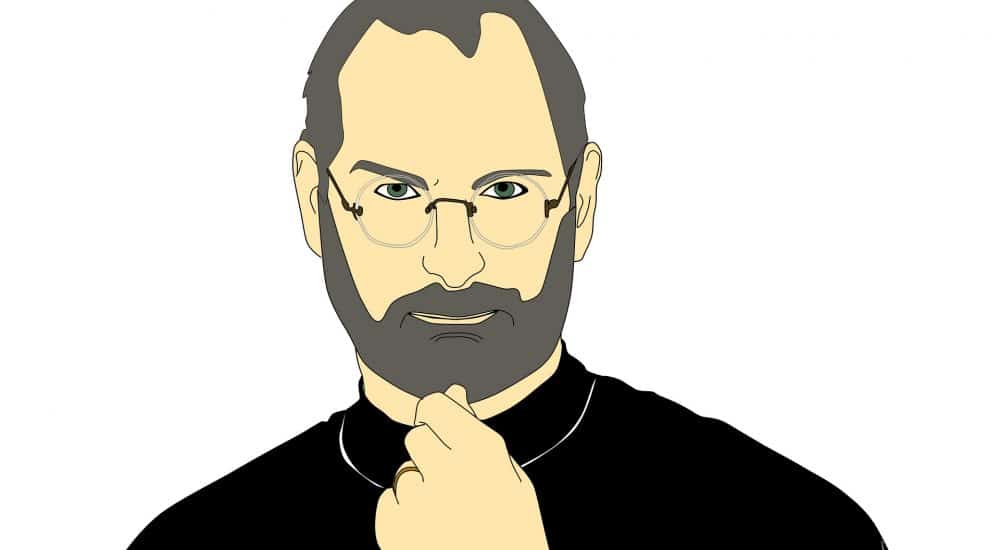Marketing Strategy for MSPs during COVID

eBridge’s Hartland Ross and Devin Rose were recently invited to join the host of CompTIA’s BizTech podcast, Miles Jobgen, to discuss marketing MSPs during COVID. If you’d like to give the podcast a listen, you may find the episode here. We also wanted to take the opportunity to formalize some of the ideas discussed in today’s blog entry.
You know, I blame Steve Jobs. Not just for being a lousy human being, or for inspiring a generation of turtleneck-wearing wannabes, or for the abomination that is iTunes. No, I blame him most for giving technical people false impressions about what marketing is really all about. Jobs is the foremost example of someone who was able to pull a rabbit out of a hat, creating an incredible amount of buzz through high-energy and unorthodox product launches. He has been often imitated and seldom duplicated. But unless you’re as exceptional as Jobs, there’s no such thing as a magic bullet in marketing. There is no single marketing tactic that’s going to transform your business, and that is especially true for B2B businesses like MSPs. The reality is less sexy: successful MSPs have an appropriate marketing mix featuring a basket of tactics applied consistently over time.
The discussions I’ve seen online in places like r/msp/ about marketing during the pandemic tend to focus on tactical elements. They often read like a search for a magic bullet…the next new marketing breakthrough. But ladies and gents, it’s not like COVID has afforded us new marketing tactics! It’s clearly the opposite; the many challenges posed by COVID have restricted tactical opportunities for MSPs (and businesses generally). I hate to break it to you…but there was no magic bullet to be found before the pandemic, and there’s certainly not one that’s come along since. Stupid Steve Jobs.
Rather than focus on tactics, a savvy MSP will first consider the strategic implications of COVID on their market. From there, they may gain an understanding of the appropriate marketing strategy, and then the tactical elements will slot into place nicely and in a logical manner. So what sort of marketing strategies make sense for MSPs right now? Let’s slip on our stupid black turtlenecks and take a look.
Be Aggressive, Gain Market Share
One of the strongest forces we at eBridge see impacting the market right now, is that smaller MSPs are really struggling. This is mainly due to a couple factors. Firstly, smaller MSPs tend to service smaller clients, and many SMBs have shut down or are operating at reduced capacity. Secondly, smaller MSPs tend to rely more on personal networking to gain leads, and of course you can’t do that now as effectively as you could prior. Mid-to-large MSPs are a bit more insulated from these factors. Their target markets tend to be mid-to-large sized too and haven’t been as impacted as SMBs. Mid-to-large MSPs also tend to have marketing mixes with a more varied basket of tactics, so they haven’t been quite as impacted by the current challenges to do with face-to-face networking. Still, many mid-to-large MSPs have cut their marketing budgets, erring on the side of conservation during a period of economic uncertainty. And as we’ll discuss later, that’s probably a good decision for a lot of MSPs. However, when you couple the struggles of smaller MSPs with the reduction of marketing budgets for mid-to-large MSPs, it results in a softer market with less competition for the attention of leads.
A softer market presents a strategic opportunity: MSPs who are aggressive with marketing may gain market share while positioning their business to excel post-COVID. Increasing investment in marketing when a lot of other MSPs are cutting budgets does require some risk tolerance. But there are significant rewards. There’s the obvious benefit of increasing revenues. Also, growing market share now will provide more leverage to negotiate with vendors in the future. It will also give you first mover advantage, in anticipation of a future when all the other MSPs decide to start ramping up their marketing efforts again. These sentiments are echoed by our friends at Service Leadership, who are leading strategic consultants for IT Service Providers:
Best-in-Class [IT Service Providers] invest more, sooner, in marketing and selling in the face of a recession than do the lower performers.
So given a strategic imperative to aggressively pursue market share, which marketing tactics should an MSP focus on? Brand awareness tactics are at the forefront. To gain market share, you need to be seen by those in the market, and especially by those businesses whose previous MSP has shutdown. The low hanging fruit tactically is social media advertising, especially LinkedIn and the necessary evil that is known as Facebook. Both social networks offer the ability to target your geographic region in addition to many other targeting options to narrow down who sees your ads. Another avenue to increase brand awareness is traditional media. Local television stations, radio stations, newspapers, industry publications, and billboard advertising companies are also struggling right now. They’re more than keen for new advertisers and you may be able to scoop up some high-impact ad spots relatively inexpensively. It’s also a great time to talk to vendors to see if there’s any MDF dollars available, or if there are any opportunities for co-marketing campaigns. For a full funnel approach, you’ll want to balance efforts to increase market share with increased direct response tactics too. Remarketing, Google Ads, SEO, and Inbound Marketing are all good choices for direct response. For Google Ads, we’ve seen a reduction in cost-per-click pricing since the pandemic started. Still, you’ll want to be careful not to cast your net too widely with Google Ads, as there’s still a lot of competition for generic security-related keywords.
Cost-Focused Strategy
Not all MSPs are going to have the financial means or risk tolerance to permit an aggressive marketing strategy right now. This is especially the case for MSPs that service verticals which have been impacted disproportionately by the pandemic (casinos, dental offices, restaurants, retail, etc.). For those MSPs, a cost-focused strategy may instead be advisable. Many readers will be familiar with the common marketing wisdom that it’s cheaper to upsell an existing customer than it is to acquire a new one. And that’s the sentiment we’re building our strategy from here.
What tactics can help you maximize revenues from the customer base you’ve already acquired and gained relationships with? Email marketing comes to mind as a low cost tactic to reach your existing customers. Focus on providing value, and made sure you don’t come across as fear mongering. Counter-intuitively, there may be some customers whose monthly bills you want to endeavor to reduce. It’s better to keep a customer at a lower ticket than to lose them entirely. Are there any licenses they are not utilizing that you could trim? Email marketing is also a good tactic to reach your database of leads. Dust off your lead database, clean it up, and get in front of them with special promotions/discounts. Speaking of leads, one of the least costly ways to acquire them is through referrals. A referral program to reward existing customers who refer new business is a potentially high ROI initiative. It may not be feasible for all MSPs, especially those that are focused on a particular business vertical, because customers may not want to refer their competitors. But it’s likely worth trying as it’s relatively low risk and high reward. Another worthwhile and low risk activity is to review your website and make sure it’s all up to snuff. Does your website still refer to Office 365? Time to change it to Microsoft 365. Have you blogged recently and regularly? It’s a good time to bank some blog entries. When was the last time you did a website re-design? The rule of thumb is that you should do-so every two years. Going through the site and making sure everything is up-to-date and looks nice just takes your time, and the resulting design changes are relatively inexpensive. And even though we’re trying to avoid advertising expenditures with our cost-focused strategy, if your website is nice and cleaned up, it’s worth considering a highly-targeted Google Ads campaign too. It is worthwhile bidding on your company’s branded terms and some select long-tail keywords that reference your region and key services (i.e. “san diego microsoft 365”). Beyond Google, you can also utilize these same sorts of keywords on smaller search networks like Bing and DuckDuckGo, where the cost-per-click tends to be lower.
Grow Through Acquisitions
Besides marketing, the other main growth opportunity presented by the current market conditions is acquiring smaller MSPs who are struggling. We expect to see significant consolidation in the coming months (hopefully not years) as the pandemic drags onwards. And the glut of smaller MSPs for sale will depreciate the valuations of these companies. Conceptually, this growth strategy is very simple, but there are a lot of practical considerations. Acquiring another MSP stresses your operational and marketing processes, so you’ll want to get your own house in order before scaling out your processes to new employees and customers. Is your CRM cleaned up? Do your sales scripts work in your favor? Can you effectively triage incoming inquiries to the appropriate technicians or salespeople? For more information about other considerations, please see the previous podcast that eBridge’s founder Hartland Ross participated in with Miles Jobgen from CompTIA, as it was all about acquisitions.
Growing through an acquisition is a more direct way to grow market share, and the benefits are similar to those previously mentioned with our aggressive market share focused strategy. You’ll be in a better position to negotiate with vendors, you’ll have less competition for new leads, and you’ll be better positioned for a post-pandemic world when acquisition prices begin to rise again. One unique benefit of an acquisition strategy is that you may be able to gain new staff with new technical competencies, which presents the opportunity to cross sell existing customers with new products/services.
That about does it for today’s blog. We’ve had our black turtle necks on for long enough and at a certain point they become a real choking hazard. I blame Steve Jobs for that too.
Interested in discussing the best growth strategy for your MSP and your market? We’d love to hear from you!
Interested in buying an MSP or selling yours? We’d also love to hear from you on our sister-site, www.themspbroker.com!
Posted September 10, 2020
Categories: Business Growth
Tags: acquisition, Advertising, Digital Strategy, msp, Recession Marketing
